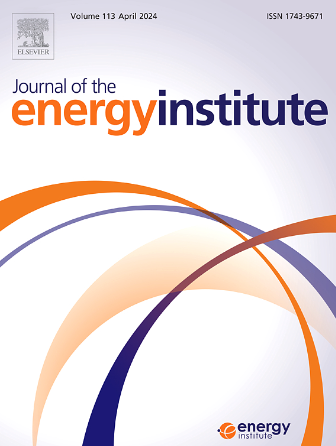Effect of addition of the scrap tires and waste plastics pyrolysis oil residue on the quality of the feed for hydrocracking and FCC
IF 5.6
2区 工程技术
Q2 ENERGY & FUELS
引用次数: 0
Abstract
Pyrolysis oil residue (360 °C+) from scrap tires (yield 37 wt%) and waste plastics (yield 10 wt%) has been considered for coprocessing with vacuum distillates by hydrocracking and with atmospheric residue by FCC. The effect of adding of 10 wt% pyrolysis oils residue on the quality of the feedstock of both processes was evaluated. The general properties, fractional, chemical, and elemental composition of pure feedstocks and their mixtures were analyzed. The homogeneity of all feedstocks and compatibility of mixed samples were verified by spot test and observation under the optical microscope. In the coprocessing of scrap tires pyrolysis oil residue, it will be necessary to pay attention to the high acid and iodine numbers, aromatics, iron and nickel content, and the tendency to carbonize, while for the waste plastics pyrolysis oil residue, it will be necessary to pay attention to the high nitrogen and chlorine content. Coprocessed feedstocks were compatible. With FCC technology, both pyrolysis oil residues can be coprocessed; for hydrocracking technology, the waste plastics pyrolysis oil residue will by more convenient. The results will be used to scale up the coprocessing of pyrolysis oil residues.
求助全文
约1分钟内获得全文
求助全文
来源期刊

Journal of The Energy Institute
工程技术-能源与燃料
CiteScore
10.60
自引率
5.30%
发文量
166
审稿时长
16 days
期刊介绍:
The Journal of the Energy Institute provides peer reviewed coverage of original high quality research on energy, engineering and technology.The coverage is broad and the main areas of interest include:
Combustion engineering and associated technologies; process heating; power generation; engines and propulsion; emissions and environmental pollution control; clean coal technologies; carbon abatement technologies
Emissions and environmental pollution control; safety and hazards;
Clean coal technologies; carbon abatement technologies, including carbon capture and storage, CCS;
Petroleum engineering and fuel quality, including storage and transport
Alternative energy sources; biomass utilisation and biomass conversion technologies; energy from waste, incineration and recycling
Energy conversion, energy recovery and energy efficiency; space heating, fuel cells, heat pumps and cooling systems
Energy storage
The journal''s coverage reflects changes in energy technology that result from the transition to more efficient energy production and end use together with reduced carbon emission.
 求助内容:
求助内容: 应助结果提醒方式:
应助结果提醒方式:


